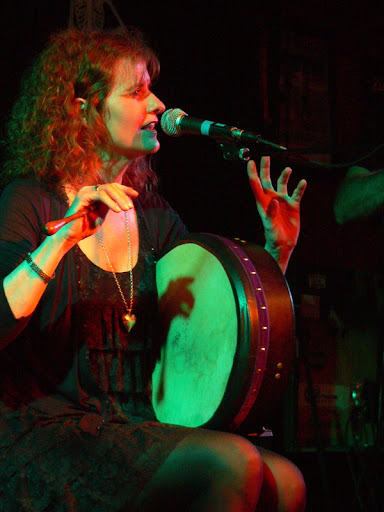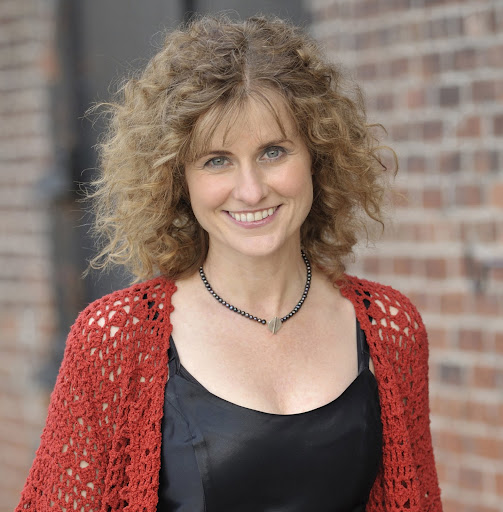Cathie Ryan: Building Musical Bridges
Cathie Ryan makes her living in the world of ideas as a singer and songwriter, and in the day to day world by being a touring musician. For her music, she draws on being the daughter of parents who came to the United States from Ireland, and her own experiences living in both Ireland and North America. It’s a music that builds bridges between the two communities. Building bridges is something Ryan thinks about in doing her work. “If there is a story or an anecdote that can go along with a song I am singing, I’ll tell it on stage,” she says, “because people come for the music, and part of that is they want to know why that song is important to you. They want that connection.”

That sharing of ideas and inviting people into her music makes teaching a natural part of Ryan’s work. She regularly takes part in Celtic Week at the Swannanoa Gathering in North Carolina, and has taught workshops at the Montana Irish Festival, Ceol Chairlinn in Ireland, Lincoln Center Institute, and the University of Michigan. She teaches both singing and Irish mythology, exploring varied aspects of these subjects, and has also taught educators how to use Irish music across the curriculum. “I love sharing ideas. I love presenting a story or a myth or a song to a class, and getting their reactions,” Ryan says. “That’s exciting, because you’re creating something living from a text.” She teaches both children and adults. “I think kids are probably more open about their questions because they’re more spontaneous,” she says. “With adults, sometimes they are thinking, can I really have an opinion on this? -- but once they get started, they’re drivin’ away!”
In her classes in Irish legend, “I usually begin by telling the story, and then we take it from there,” Ryan says. “With mythology, you really have no idea exactly when it was written or why it was written, it’s all up for conjecture. With the legends and the folklore, I love to look at them through a psychological lens, because, you know, they're full of archetypes and themes that we can use, that are relevant in our lives today.”
She encourages her students to make the same sort of connection when she is teaching singing. “It’s great to work with a class on honoring the song -- and to do that, you really have to get out of your own ego, your own self judgment of how you’re singing, and think about what do I want to bring to this song? What is this song saying? How can I sing it in a way that makes it real -- that makes it true in this room right now?”
Ryan is a master of doing this in her own work, as any who've heard her live will tell you. It’s also a gift which comes through on her recordings. She has five solo albums to date, the most recent being Through Wind and Rain, the first album she has produced on her own, and the first she’s released on her own independent label. A central idea as she was gathering the music was experience of loss that transforms, “loss that shatters and leaves you in completely different place,” she says.
That may make it sound as though the music is rather grim, but that’s not at all the case. In the songs she’s written and those she gathers from other sources, there is hope even in the darkest places, with sometimes just a thread of melody to suggest that, and at times songs that offer full out joy and hope in story as well as melody. Fare Thee Well had its origins in a folk song of the American south to which Ryan added words that rang true for her, set in a spare, haunting arrangement led by guitarist Patsy O’Brien and fiddle player Matt Mancuso. Liberty’s Sweet Shore, written by John Doyle and Catherine Peterson, tells of those leaving Ireland thinking of what is ahead and what they are leaving behind. “That idea of loss that transforms can apply to nations, too,” Ryan says, “and is still happening today.” I’m a Beauty, by Canadian writer Laura Smith, is a song that speaks of reflection, discovery, and courage, while In the Wishing Well, which Ryan wrote to a melody by Noel Lenaghan, is a song of the ups and down of love and lessons learned, sharing truth with a bit of humor, a dash of hope, and a lively melody. Roger and Camilla McGuinn’s take on the Irish blessing May the Road Rise to Meet You adds to the gathering of songs. “I think it’s always important to have a blessing,” Ryan says. There are songs by Mairéad Ni Mhaonaigh and Kate Rusby, as well as other songs from the tradition and songs that Ryan has written that round out the collection.

“All of these songs I’ve chosen to cover are written by those of us who are just steeped in tradition,” Ryan says, “people who are rooted in the traditional music word, and I think that is a beautiful thing. It’s wonderful to celebrate people who have given their lives to the tradition, and who are taking it to another level.”
As indeed is Cathie Ryan herself, as she shares her ideas and builds musical bridges through her singing, her songwriting, and her teaching. You can find her online at http://www.cathieryan.com/

Photo courtesy and copyright Joe Sinnott
Kerry Dexter is Music Editor for Wandering Educators You may reach Kerry at music at wanderingeducators dot com
You may find more of Kerry’s work about music and musicians of Ireland, Scotland, and North America, as well as travel, history, and creative practice, at Music Road, Journey to Scotland, Perceptive Travel, Ireland and the Americas, National Geographic Traveler, and other places.
Photos courtesy and copyright Kerry Dexter, except where noted.
-

- Log in to post comments



















